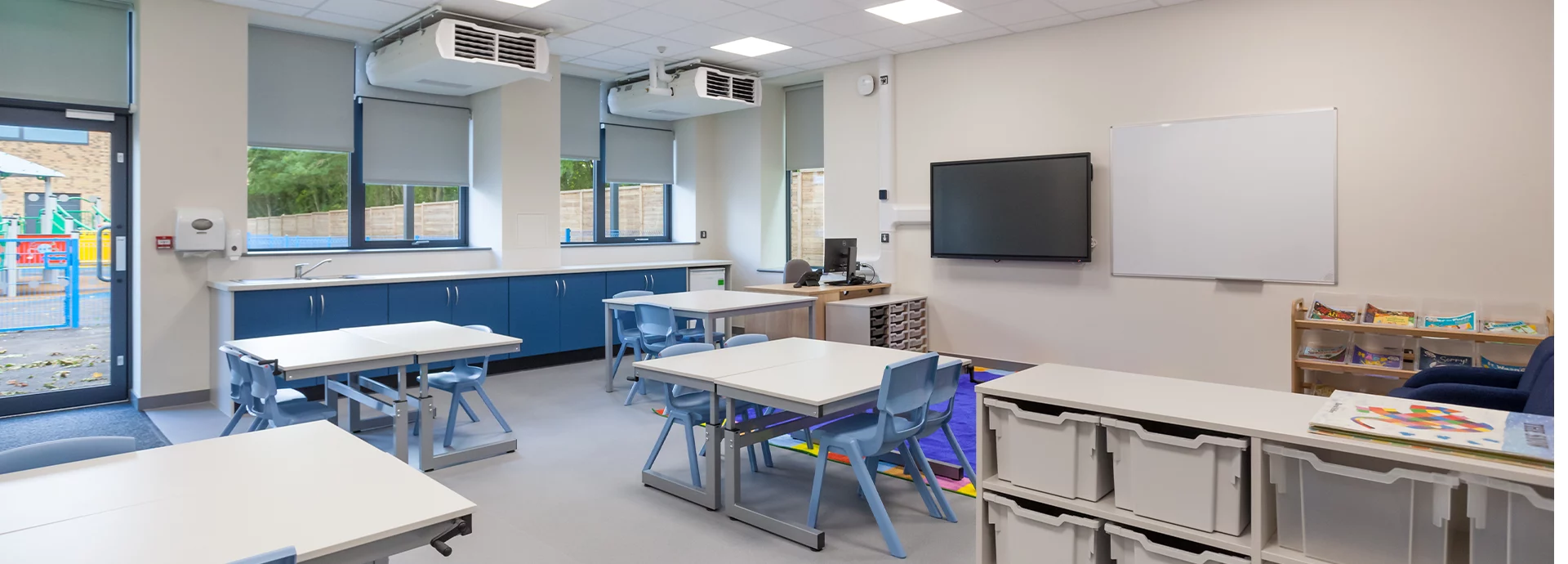Understanding Accessibility in Classrooms
Accessibility in the classroom goes beyond physical adjustments; it encompasses sensory, cognitive, and emotional inclusivity. An effective learning space accommodates different learning styles and provides a safe, engaging environment for students with diverse needs. Accessibility also means removing barriers to learning and ensuring that every student has the resources and tools needed to reach their full potential.
Physical Accessibility
An inclusive classroom must provide easy access for students with mobility challenges. This includes ramps, wide doorways, and adjustable furniture to ensure comfort and accessibility. Classroom layouts should allow for easy navigation, with unobstructed pathways and accessible storage solutions that students can reach independently. Ergonomic seating and height-adjustable desks can further enhance the comfort and support of students who require additional accommodations.
Sensory Considerations
For students with sensory sensitivities, the classroom environment should minimise overstimulation. Clear signage with symbols, large fonts, and Braille supports visually impaired students, while non-glare lighting reduces visual strain. To create a calm atmosphere, soft furnishings, carpets, and acoustic panels help absorb excess noise. Additionally, offering noise-cancelling headphones and designated quiet areas can benefit students who need sensory breaks.
Flexible Learning Spaces
A well-designed classroom should offer a variety of seating arrangements to accommodate different learning styles and needs. Quiet corners for independent study, collaborative spaces for group work, and standing desks for students who require movement all contribute to a more inclusive environment. Adaptable workstations enable educators to adjust the layout as needed, ensuring that every student has a comfortable and effective learning experience. Structured routines and flexible schedules can further support students who need additional time to transition between activities.
Assistive Technology
Technology plays a vital role in making learning more accessible. Speech-to-text software and voice recognition tools assist students with writing difficulties, while audiobooks and screen readers provide essential support for visually impaired students. Alternative communication devices, such as AAC (Augmentative and Alternative Communication) tools, help non-verbal learners engage with their peers and teachers. Incorporating interactive whiteboards, tablets, and adaptive educational apps ensures that all students can participate fully in lessons.
Inclusive Teaching Strategies
Teaching methods should be designed to engage a variety of learning styles. A multi-sensory approach that integrates visual aids, hands-on activities, and interactive technology helps ensure that lessons are accessible to all students. Differentiating instruction allows educators to address diverse learning needs, offering scaffolded support where necessary. Encouraging peer collaboration fosters a sense of belonging, while using clear, concise instructions and breaking down tasks into manageable steps benefits students with cognitive challenges.
Emotional and Social Support
Beyond academics, emotional and social support is critical in an accessible classroom. Providing quiet spaces or sensory rooms allows students to self-regulate when they feel overwhelmed. Schools should foster a culture of respect and understanding through inclusive education programmes and disability awareness training. Individualised support plans, such as IEPs (Individualised Education Programmes) or behaviour intervention strategies, help tailor support to each student’s unique needs. Predictable routines and structured transitions create a stable environment that reassures students who struggle with change.
Educator Training and Collaboration
Equipping educators with the right training and resources is as important as designing the physical space. Professional development programmes can help teachers implement best practices for supporting SEN students. Encouraging collaboration between educators, therapists, and parents ensures a comprehensive support system, while open communication channels between staff allow for adjustments to teaching strategies. Providing mentorship opportunities for new teachers can also enhance their ability to create an inclusive learning environment.
Conclusion
Designing accessible classrooms is fundamental to encouraging an inclusive education system that benefits all learners. By implementing thoughtful adaptations, educators can create an environment where students with SEN feel valued, supported, and empowered to succeed.
Ensuring accessibility in classroom design not only enhances the learning experience for SEN students but also promotes a culture of inclusivity and equal opportunity for all learners. If you need some extra help with designing accessible classrooms, have a look through our Specialist Education page to find more resources.
FAQs for Accessible Classroom Design
What makes a classroom accessible?
An accessible classroom removes physical, sensory, and cognitive barriers, ensuring all students can engage in learning comfortably and effectively.
How can classrooms support students with mobility challenges?
Features like ramps, wide doorways, adjustable furniture, and unobstructed pathways help students navigate the space independently.
What sensory considerations improve classroom accessibility?
Non-glare lighting, soundproofing materials, clear signage, and designated quiet areas help minimise overstimulation for students with sensory sensitivities.
Why are flexible learning spaces important?
Adaptable seating arrangements, quiet study areas, and collaborative workspaces allow students to learn in ways that suit their individual needs.
How does assistive technology enhance accessibility?
Speech-to-text software, audiobooks, screen readers, and AAC devices support students with communication and learning difficulties.
What inclusive teaching strategies benefit SEN students?
Multi-sensory teaching, differentiated instruction, peer collaboration, and clear, structured lessons help engage diverse learners.
How can classrooms support emotional and social well-being?
Quiet spaces, structured routines, and inclusive education programmes foster a supportive environment for all students.
Why is educator training essential for accessibility?
Professional development ensures teachers can implement best practices, collaborate with specialists, and adapt teaching methods for SEN students.

